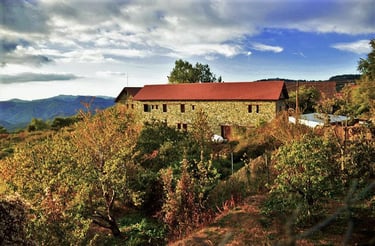Holy Monastery of Panagia Trikoukkiotissa in the Troodos Mountains – Byzantine Heritage, Orthodox Faith, Culture of Cyprus
History of the Monastery in Honor of the Icon of the Most Holy Theotokos Eleousa Trikoukkiotissa
The Holy Monastery of Panagia Trikoukkia (from the Greek "three dots") holds a special place among the monasteries of the Marathasa region. It is located in an exceptionally beautiful, open and sunny location in the Troodos mountain range. The Monastery stands among evergreen pine trees, often of strange shapes, fruit trees, cultivated fertile lands and abundant springs of clean water.
It is only two kilometers from the highest village of Cyprus, Prodromos, and is considered one of the oldest and best-known monasteries on the island. Most likely, its foundation dates back to the Byzantine period. From the available sources it appears that its heyday was during the era of the Frankish dynasty of the Lusignans (1191–1488).
In the ecclesiastical history of the island, a special place is occupied by the events related to the miraculous Icon of the Virgin Mary of Trikoukkiotissa, which is kept in the Monastery. According to tradition, this Icon was painted by the Evangelist and Apostle Luke himself. During periods of drought, the Icon was solemnly transported in a litany to the capital of Cyprus, Nicosia, where it was welcomed not only by Cypriots but also by Latins. After the prayers, the Icon returned in the same way to the Monastery. Through the intercession of the Most Holy Theotokos, the island was freed from the terrible consequences of the drought.
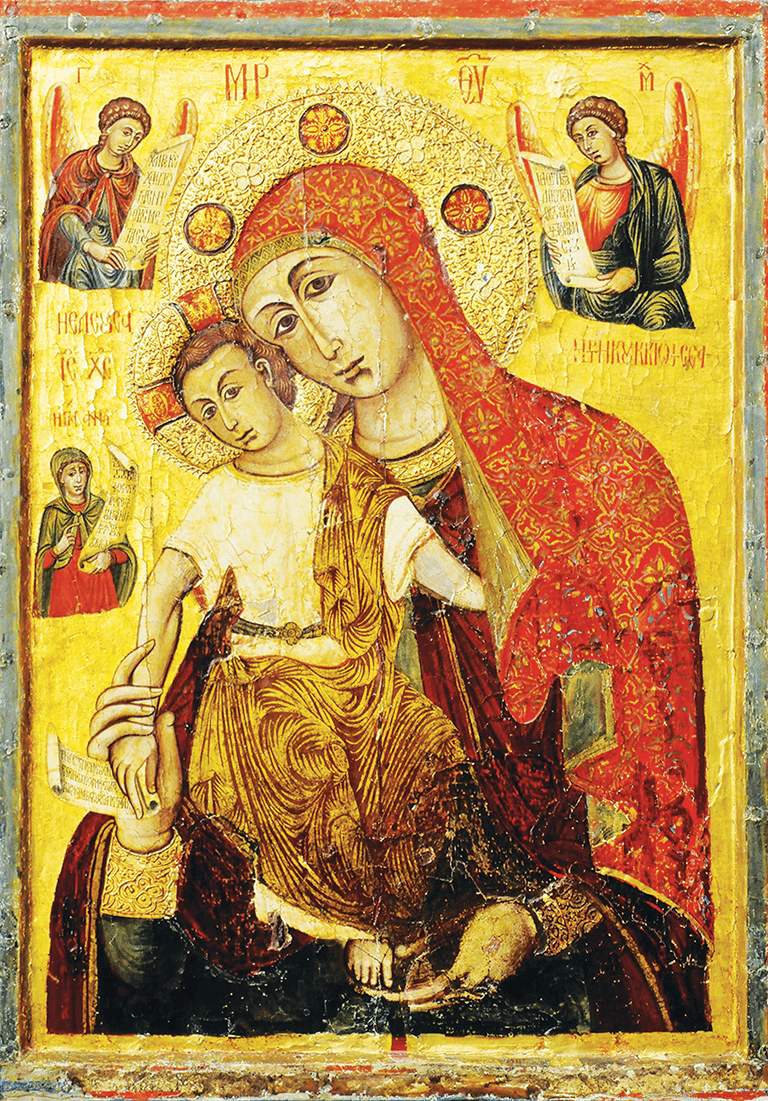

18th century
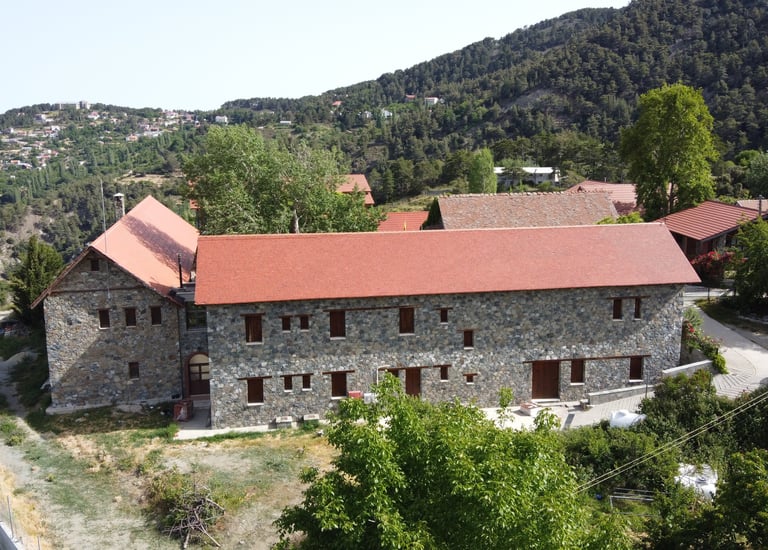

In the summer of 1735, the Russian monk and pilgrim Vasily Grigorovich Barsky visited the monastery and stayed for five days. In his memoirs, he described the monastery as being twice the size of the neighboring Trooditissa Monastery but in a severely neglected condition due to the poverty of the Christians, oppression by the Turks, and excessive taxation.
In 1761, the monastery was restored and continued to function until the end of the 18th century, when it was abandoned by its inhabitants—most likely due to disturbances caused by the Turks. Thus, the monastery gradually fell into ruin.
The same happened with many other Cypriot monasteries, which, once abandoned by the monks, fell into decay from exposure to the elements or were even destroyed.
So ended this vibrant history of spiritual struggle, inscribed in the long sequence of events related to this sacred place.
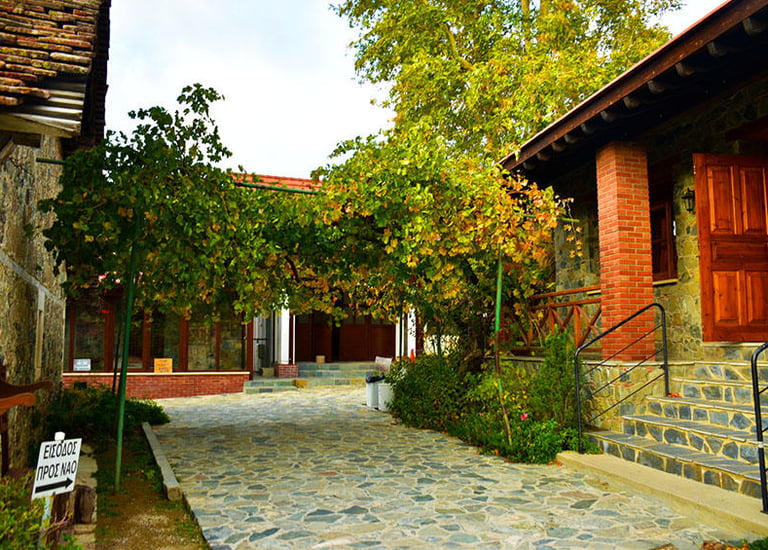

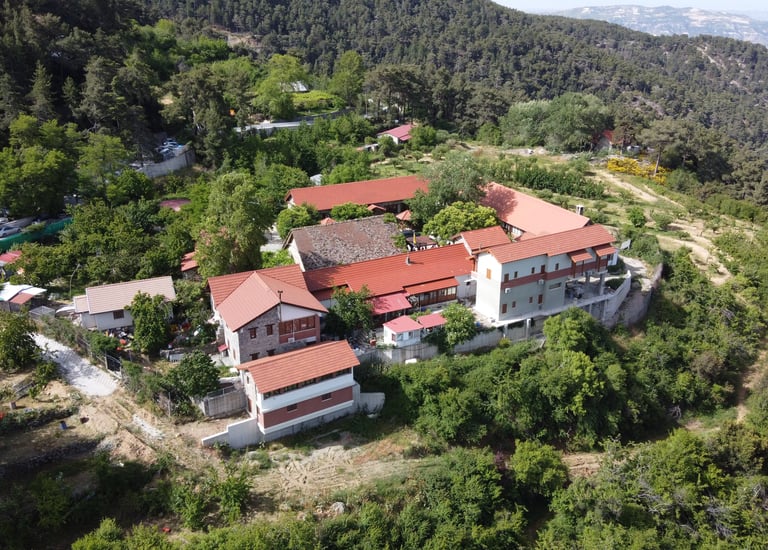

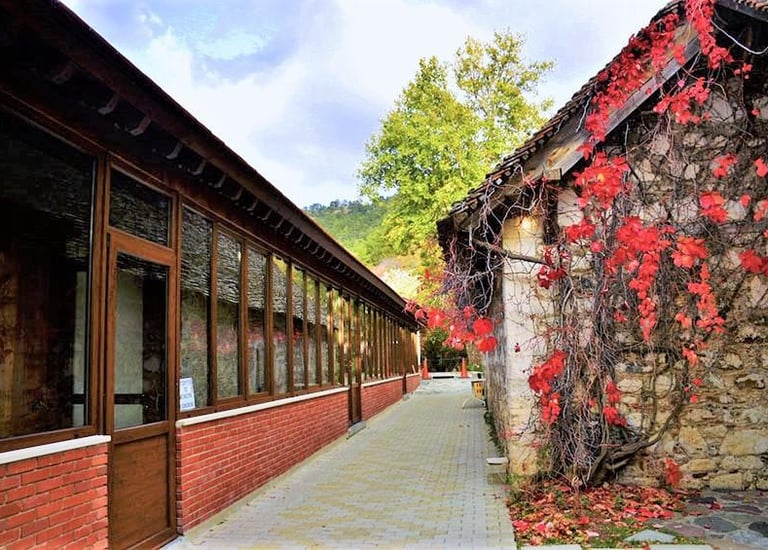

After a long period of abandonment, the monastic buildings were taken over by appointees of the British colonial government. They renovated the northern wing for housing staff, and the monastery itself was converted into an agricultural plant nursery.
The only monastic structure preserved to this day is the touching, restored church, built in the basilica style with a steep roof and wooden carved window shutters. The katholikon (central church) of the monastery is dedicated to the Feast of the Dormition of the Theotokos. It is spacious and serves as a place of spiritual consolation not only for the sisterhood but also for devout pilgrims. It is in this church that the monastery’s services take place, including the Divine Liturgy, prayers for world peace, and the salvation of souls.
In 1997, a new chapter began in the life of the monastery. After a long hiatus, the monastery reopened as a women’s convent with a coenobitic rule. Through the grace of the Most Blessed Theotokos, a small number of sisters succeeded in reviving monastic life in this deserted place in the spirit of traditional Eastern monasticism and authentic Christianity. Their life serves as a living testimony to the fullness of spiritual life in the Orthodox Church, continuously leading souls to Christ.
The primary and essential labor of the members of this spiritual oasis consists of the unceasing celebration of services, ascetic practice, study of Holy Scripture and patristic writings, and of course, the fulfillment of personal prayer rules. Alongside their spiritual pursuits, the sisters undertake various obediences related to the monastery’s upkeep, such as handicrafts, iconography, incense making, production of rose water and fruit preserves, as well as agricultural tasks.
The unity of the community and harmonious coexistence of the nuns is founded on the search for God's will, attention to the inner life, ceaseless prayer, fasting and asceticism, respect for superiors and fellow sisters, humility, discernment, strong personal will, and complete obedience in accordance with the canons handed down by the God-bearing Fathers concerning monastic life.
The life of a nun is a voluntary offering of love to our Heavenly Bridegroom, Jesus Christ—a spiritual struggle of preparation for meeting Him in eternity.
Thus, the monastery was reborn! Yet this revival came at the cost of many labors, self-sacrifice, and deep love for the Most Blessed Virgin Mary.
The work accomplished is also the fruit of unwavering faith, divine assistance, tireless effort, patience, and inner fortitude. The Lord blessed our fervent zeal and voluntary sacrifice.
The Apostle Paul wrote these remarkable words in his letter to the Romans: "All things work together for good to those who love God" (Romans 8:28). These words of Scripture could not be more fitting. Time and again, we were eyewitnesses to the direct involvement of God's providence and the help of the Most Holy Theotokos in this sacred place.
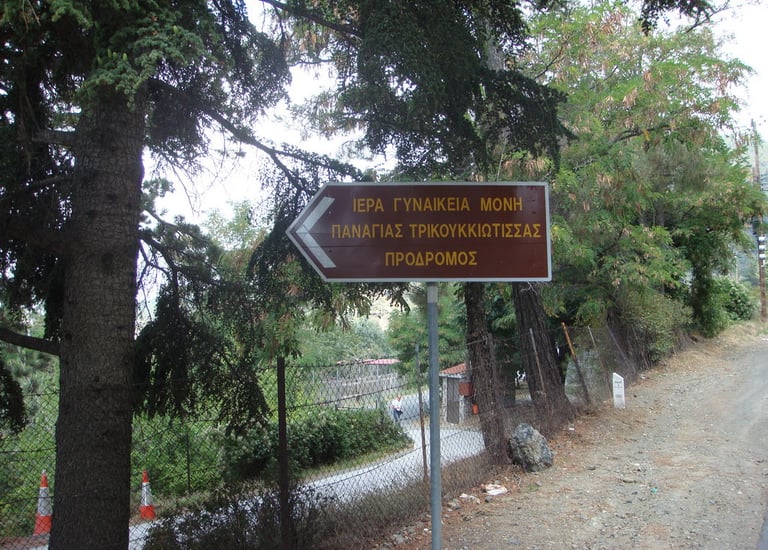

An important point is that the monastery has practically no steady income other than the sisters’ handiwork and the offerings of pilgrims who love our convent.
As we have already mentioned, almost nothing remains of the monastery’s buildings that would inspire awe.
In the beginning, we had to approach pious parishioners as supplicants, who gladly and lovingly helped us in the restoration of the monastery.
Today, the monastery functions fully, serving visitors and pilgrims as a living witness to the palpable presence of the Invisible God in this place. From monastic experience, we also see that even today, faith in God gives people strength to endure difficult circumstances, makes them steadfast amidst the tribulations of this temporal life, and guides them toward eternal life, immortality, and the true glory that can only be found in God. When a devout pilgrim enters the monastery through the main gates, he immediately begins to sense this Divine Glory, experiencing reverent awe. He begins to perceive the holiness of the place, and praise to the Lord our God spontaneously flows from his lips.
On cold winter days, visitors can behold a wondrous sight: the monastery and surrounding area are covered in snow. Clouds and frequent fog envelop the landscape in a dense veil, creating a mystical atmosphere and bestowing the monastery with a mysterious, unearthly beauty. For the few pilgrims who dare to venture up into the mountains during this season, a rare sight awaits: they may become spectators of pristine, untouched nature—possibly one of the most unique experiences of their lives. They should be aware, however, that in winter the roads are sometimes impassable due to ice and snow.
On weekdays, the monastery is open from 8:30 AM to 1:00 PM and from 3:00 PM to 5:00 PM.
On Sundays, great feast days, during Holy Week, and on the days when the Akathist Hymns to the Theotokos are celebrated, services follow the liturgical schedule of parish churches.
The monastery’s feast days are the Dormition of the Most Holy Theotokos and the Second Day of Bright Week (Easter Monday).
This is a brief historical overview of the events connected with our monastery, from its founding to the present day, addressed to visiting pilgrims with the aim of introducing them to its history. We would like the veneration of the monastery’s holy relics to be made with full awareness.
We humbly ask all who visit our monastery to remember the sisters in their prayers, so that the Lord may strengthen them in their difficult service and in preserving the spiritual treasures entrusted to them. May the Most Holy Theotokos bless every good endeavor of those who visit our monastery and of all who labor for the glory of the Most Holy Name of Her Son, our Lord Jesus Christ.
With best wishes,
Abbess Hristonymphi
Monastery of the Icon of the Most Holy Theotokos Trikoukkiotissa
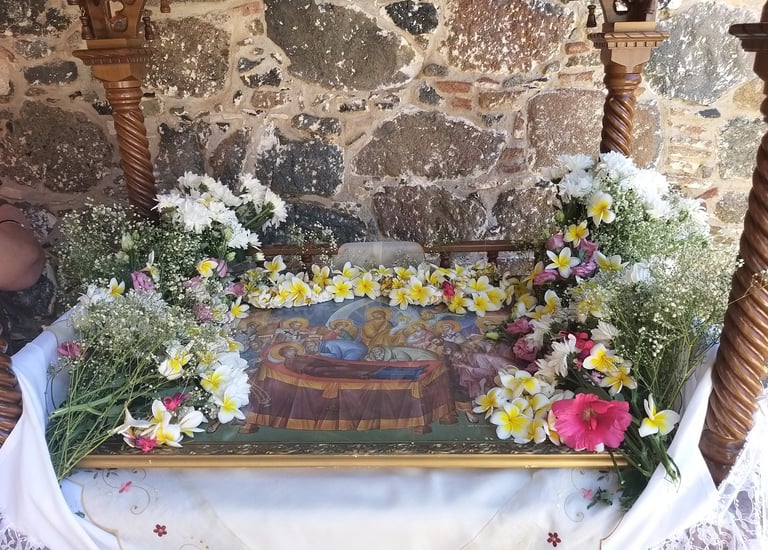


© 2025. All rights reserved.
Friends of the Holy Monastery of Panagia Trikoukkiotissa
★★★★★
With reverence and love to the Holy Monastery of Panagia Trikoukkiotissa.
About this page!
This page was created and is maintained by devout friends and pilgrims of the Monastery, with the sole purpose of expressing love for the Holy Monastery and providing spiritual information to our brethren in Christ, such as the schedule of Holy services and other edifying details.
The Nuns of the Holy Monastery do not manage the page nor intervene in its public presence, in order to safeguard their sacred silence, humility, and devotion to prayer and the monastic life.
With respect and brotherly love, we invite you to visit this Holy Place, to pray before the Holy Icon of our Panagia, to receive a Blessing from the Blessed sisterhood, and to experience a few moments of heavenly peace.
Nestled in the lush arms of the mountainous Cyprus, in a landscape filled with tranquility, fragrance, and divine serenity, lies the sacred refuge of the Holy Monastery of Panagia Trikoukkiotissa — a place dedicated to the worship of God and the grace of the Most Holy Theotokos.
May Panagia Trikoukkiotissa shelter and strengthen your every step.
We look forward to seeing you at Her Monastery!

